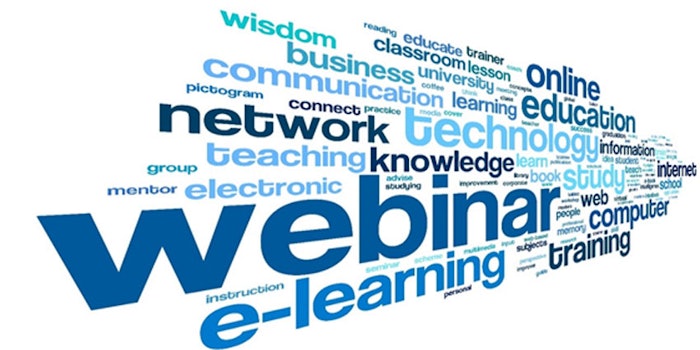
Are you ready to expand your client base by hosting your first online event? There are many wonderful reasons to include online events in your marketing toolbox and equally as many methods to host them.
Online events connect your business with interested participants through the internet, providing the opportunity to build your business identity. They are less expensive than hosting an in-person event and can be catered to engage with specific geographic audiences. Your selected method of presentation may be determined by the anticipated size of your audience, your internet’s broadband capacity and your location.
Online Event Terminology
Web-based presentation terminology can be a bit confusing to the online event novice. Here is an explanation of the subtle differences.
Webinars are online seminars. These events are usually educational and oftentimes contain subliminal marketing. A presenter invites customer engagement by encouraging two-way communication. Webinars are often recorded for attendees unable to make the live presentation. The presentation usually involves PowerPoint or Keynote.
Webcasts. These events are recorded presentations delivered in a broadcast format (one-way to the audience) rather than an interactive and engaging format.
Web meetings are internet-based meetings. This collaborative communication is presented through audio and/or video. Web meetings are smaller events than a webinar and rely on interactive communication. Companies use this format for ideation, sharing information and for training. Web meetings can include collaboration tools that capture notes, share documents and allow input from multiple team members simultaneously.
Videoconferencing. This employs visual contact between the presenter and the audience. Video conferences can be high end or held on your phone using Skype or FaceTime; any device with a webcam will work.
Teleconferences. These are no more than the good old-fashioned conference call. They are low-tech using audio only. Any documents or other virtual references would need to be sent prior to the conference. A teleconference can be used as the format to host a Radio Show.
Virtual conferencing. Properties of all of the other formats are combined with this type. Participants are given an avatar and can move throughout the room interacting by chat, voice, view recordings and live presentations. It is also referred to as a virtual event.
Popular Online Events
Live Webinars. Also referred to as webcasts or web conferences provide a plethora of topics including: clinical education (e-learning webinars, sales, marketing, business development, product launch, product demonstration, virtual meetings (for remote staff) and staff training (new hire or refresher training). Remember that attendees expect online events to be educational. If you wish to promote a product, be sure to be subliminal.
Recorded webinars. It is imperative to provide your information to any interested party unable to log into your live presentation. Always include a final slide with contact details so that any participant (live or recorded) can still reach you with any questions.
Virtual events. These include virtual tradeshows, virtual job fairs, and virtual company-wide gatherings. In some cases, a live event like a tradeshow hosts a virtual event to complement it called a hybrid event. You would need to subscribe or employ a web hosting company that specializes in this form of event.
Radio Shows. These are a great opportunity to engage with attendees that are able to call in when they don’t have the ability to be near a computer. A radio show can easily be accomplished by setting up a conference call with a toll-free call-in number.
Live stream chat sessions. These live events are streamed directly to the viewer. They can be presented from your home office through a webcam or for high-quality broadcasts, you can employ a production crew or tape in a local media facility. You may choose to share a PowerPoint presentation or deliver a live demonstration during your streaming session. Common live stream formats are: YouTube Live, Facebook, Twitter via Periscope.
E-Learning. While E-learning itself may not be a true live event, it is still an online experience that you should promote regularly through your webpage and social media sites or through an online presentation.
Reasons to host Online Events
Lead generation. You share your content, while you collect the names, phone number, e-mail address, etc. of the attendees. A live or pre-recorded webinar embedded into your website can be the ticket to prospective sales for your spa.
Customer engagement. Customers appreciate having their opinions valued. Enable the chat screen and include surveys within your presentation. Ask your attendees for their opinion and then thank them for sharing it.
Client relationship building. Nurturing new customers with small pieces of information at a time helps to build loyalty. Retain your current customers by keeping them informed, answering their questions, and proving customer value by providing a sneak peek into upcoming product launches.
Brand awareness. Your online event is an opportunity to share other products and treatments outside of what your client currently uses. Webinars build brand awareness by creating a relationship between your content and your customers. Be sure to have your logo on all web pages and e-blasts associated with the webinar. Record your webinars for uploads to YouTube, Vimeo or to embed in your website. The more familiar you become, the more you can build trust and establish credibility. A webinar can be an effective tool to showcase or demonstrate a new product or treatment that you offer. Building product and treatment awareness helps to build their demand.
Pre-Event Considerations
If you do not already use a web event hosting company, do your research to see which company will best fit your needs. There are multiple options. Citrix offers Go to Meeting, which can handle up to 100 attendees and Go to Webinar, which can accommodate up to 5,000. WebEx is another popular service that can also accommodate 100 attendees in a video meeting and 1,000 in a webinar. Also, include the following considerations.
Who will present? Do you need to look for an industry expert? Allow at least 8 to 12 months to schedule an industry expert to present for you. Consider having an alternate presenter in case an emergency arises.
How proficient are you with PowerPoint or Keynote? If unfamiliar with these programs, do you plan to learn one prior to your event or hire someone to make your slides for you? For the PowerPoint or KeyNote pro, consider loading your slides with imagery, minimizing content. Images are far more impactful. Your slides should never be used as notecards, just as reminds of what you would like to share. Novices should consider taking a slide design class. Beginners tend to overload slides with numerous bullets containing heavy verbiage.
How many attendees do you anticipate? The number of anticipated attendees can affect your choice of web hosting service provider. Some providers can host events with over 1,000 attendees and can accommodate multiple presenters.
Will your current event hosting system accommodate the anticipated number of attendees? The larger the audience, the more expensive the rate. You may choose to host regional events with more attendee-friendly time frames by time zone that encourage regional conversations as opposed to one nationwide or international event.
What is the quality of your internet connection? Many providers require updated operating systems, specific web browsers, an internet connection of at least 1Mbps or higher with broadband recommended, JavaScript enabled, 2GB or more of RAM, a microphone and speakers, and a USB headset to broadcast.
Test your equipment. A few times prior to the big event, test your equipment. Be sure to have a high-quality microphone and HD webcam for your presentation.
Does your presentation include a video? Check to be sure that your provider can accommodate videos within a PowerPoint or Keynote presentation. Not all providers can.
Consider attendee computer savviness. Some attendees have difficulty downloading the software and wait until 30 seconds before the event begins to try logging in. Advise testing equipment and software repeatedly in all event reminders. Nothing is worse than a frustrated participant that can not log in.
Practive transitions. For online events including video, be sure to practice switching from video back to your presentation. There is an art to a seamless transfer that is perfected through practice. Your webinar provider should have technical support to assist you.
Browser Support. Webinar providers will let you know which browsers work best with their service. Be sure to advise your attendees which browsers to use in all of your online event marketing.
Practice. Do not forget to practice your presentation for timing. Online presentations can last from 30 minutes to one hour. Allow 10-15 minutes afterward to answer questions. Include the anticipated length of your online event in any marketing promoting it. Customers want to manage their time efficiently.
Suggested Timeline
Your online event may be part of marketing strategy for a product launch, an educational seminar to fill client or employee need, or it may be your method of communication to share company updates with employees nationwide or even internationally. Regardless of the type of event or the presentation format that you choose, any successful event requires planning. Planning often begins up to 12 months before large complex events or perhaps only 12 weeks prior for smaller, quarterly events by accelerating the steps in the timeline. The following is a suggested timeline.
8-12 Months Prior
- Determine the reason, the goals, and establish a budget for your event.
- Appoint a coordinator.
- Set the time and date for the event.
- Select the format for your event (webinar, virtual, radio show, etc.
- Will you need a presenter? Contact prospective presenters 12 months prior, as their schedules fill early.
- Start an outline for the slideshow content.
- If new to PowerPoint or Keynote, take slide presentation classes, or contract with a designer to create the presentation for you
- Find out if your web hosting company can accommodate a video embedded within a presentation
5 Months Prior
- It’s time to create the slideshow. Your presenter will need ample time to review it once completed.
4 Months Prior
- Determine the appropriate marketing/social media platforms that will reach your target audience.
- Set up new social media platforms where needed.
- Compile lists for e-blasts.
2 Months Prior
- Create registration and landing pages for the event.
8 Weeks Prior
- Begin social media promotion.
- Issue a press release.
- Post announcement on your website.
- Double check that all necessary audio-visual equipment is in working order.
8 Weeks Prior
- Continue with weekly promotion on all social media channels, newsletter, etc.
Week of the Event
- Promotion on all media channels daily.
Day Before
- Tweet out reminders in the morning, afternoon, and evening.
Day of
- Send out one final reminder the morning of the event with log-in instructions.
During the Event
- Take a final run through at least two hours prior.
- Log into the web hosting site at least 30 minutes prior for all final preparations
2 Days Post
- E-mail a thank you to all participants with a survey to share their valued opinions
- Follow-up on all leads.
1 Week- 6 months Post
- Analyze results (new or increased sales, registrations, etc.) to determine ROI.
- Continue lead follow up.
If you hire an online event planner experienced in these productions, they may be able to expedite the process down to just a few short weeks. The secret to hosting a successful online event is planning. Take your time, be thorough, then enjoy the process!











